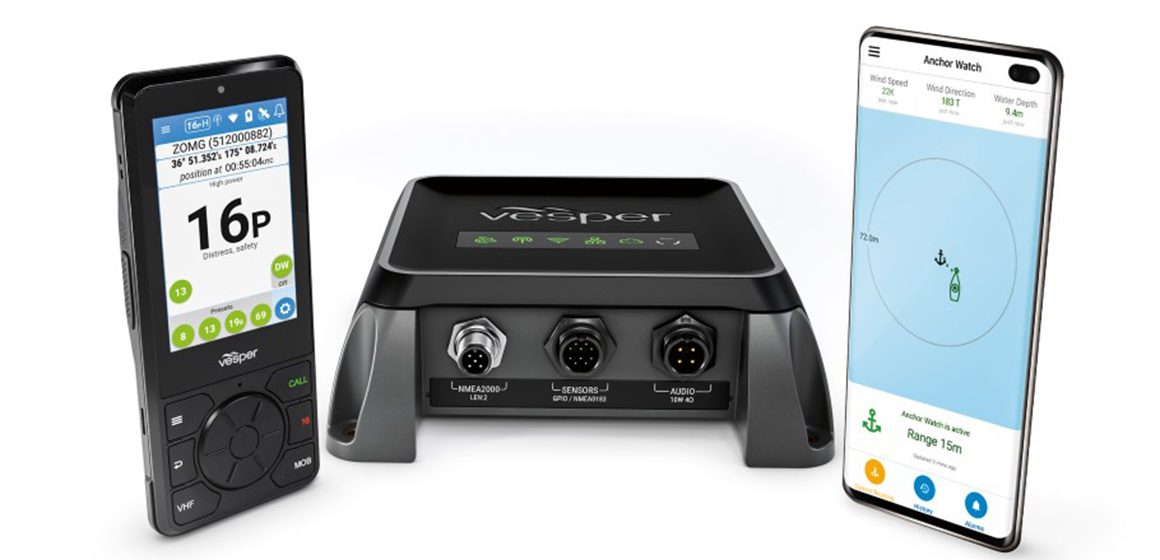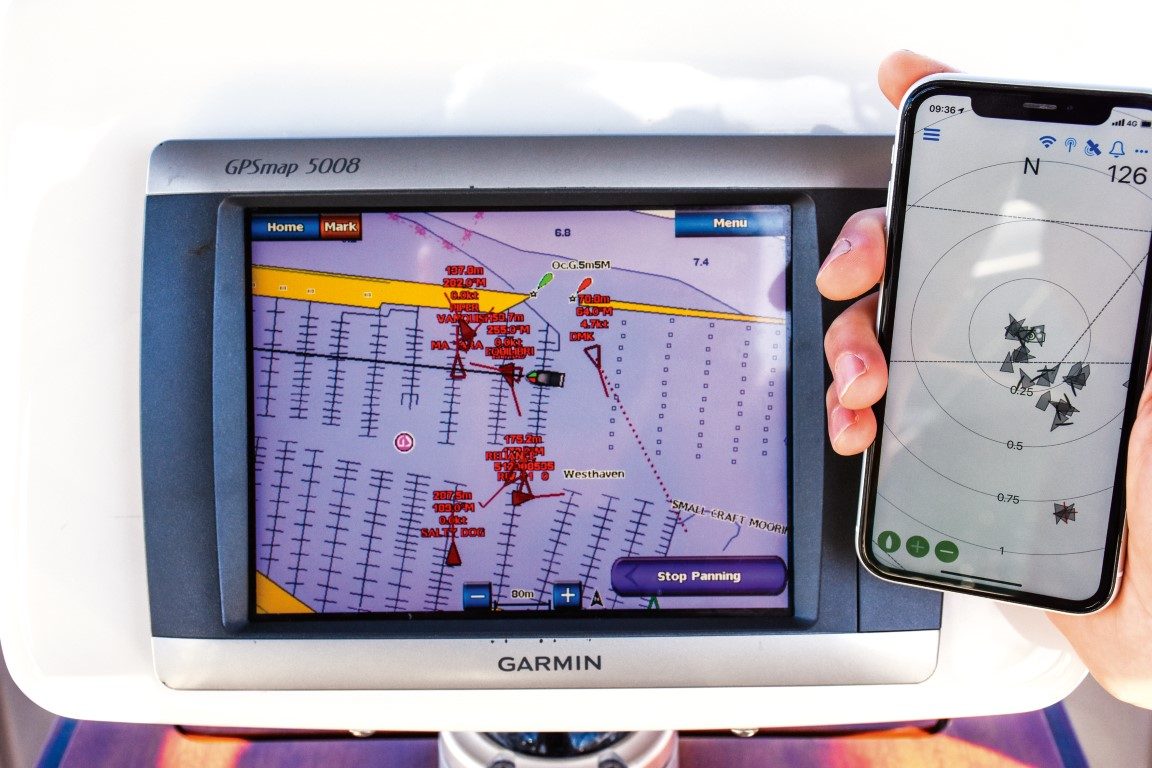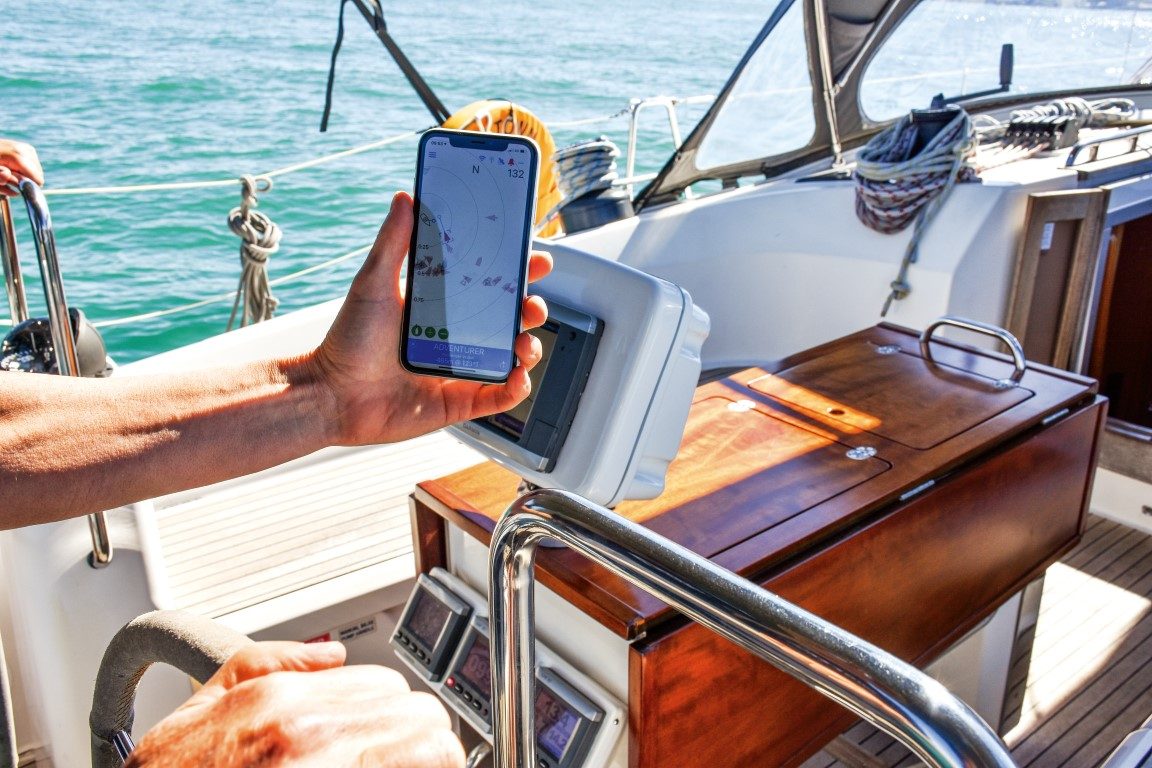

Thanks to communication protocols such as NMEA2000, convergence in the marine electronic sector is accelerating. Auckland’s Vesper Marine has taken the trend in a slightly different direction with its new, all-in-one Cortex.
Cortex is best described as a VHF radio packaged with a host of additional, built-in features geared to improved safety, better navigation, sharper security – and easier communication with other boats. It’s widely considered a ‘game-changer’.
Among the product’s most notable attractions are its modest ‘footprint’ and low power consumption. It comprises a small but super-smart ‘hub’ (mounted behind a bulkhead, for example), and a separate wireless, touchscreen handset that looks and feels like a smartphone. The handset lives in a docking station for charging. Wired handsets (tethered to the hub) are also available.
 But Cortex’s stand-out ability is its diverse functionality. While it’s first and foremost a VHF radio, the additional built-in features (which harness DSC, AIS and GPS technology) promise to transform the user’s boating experience. These features include Collision Avoidance, Anchor Watch and Man Overboard – as well as real-time remote monitoring of the vessel’s position and vitals (battery levels, bilges and refrigeration, for example).
But Cortex’s stand-out ability is its diverse functionality. While it’s first and foremost a VHF radio, the additional built-in features (which harness DSC, AIS and GPS technology) promise to transform the user’s boating experience. These features include Collision Avoidance, Anchor Watch and Man Overboard – as well as real-time remote monitoring of the vessel’s position and vitals (battery levels, bilges and refrigeration, for example).
In practical terms, where boaties previously needed multiple, disparate pieces of equipment for these services (requiring sufficient space at a helm/nav station and collectively drawing lots of power), they can now have a single system offering the same functionality – and drawing very little energy. So energy-efficient, in fact, that the hub can be left ‘on’ permanently to enable remote monitoring.
The handset is controlled via its 4-inch touchscreen, or with the more conventional buttons below the screen. Up to 10 handsets can be used in conjunction with a single hub, five directly to the hub, and the rest through an on-board network allowing for increased range on larger, multi-deck vessels.
Apple and Android apps further extend Cortex’s user-friendliness – with most of the features able to be viewed and actioned from a smartphone.
Developed entirely in New Zealand, the technology has only been available for a few months but is already drawing wide international acclaim – particularly in Europe and the US – where fans are adamant it will revolutionise the way people use their boats.
Collision avoidance
In a clever combination of VHF and high-speed AIS transponder technology, Cortex effectively makes your boat visible to others (and theirs to you), and the system’s healthy 5W power output means AIS targets are visible from a considerable distance.
The hub’s built-in heading sensor gives other AIS-equipped vessels your speed and direction, helping to predict potential collisions more accurately. And with every AIS-equipped vessel’s details viewable on the handset, the technology also warns you of potential collision risks.

On launches travelling faster than 14 knots, information about your identity/position/bearing is transmitted to other vessels more frequently, providing more reaction time to avoid collisions. By ‘pinching’ to zoom in/out, details of every target are easily viewed. Potential collision risks are supported by audio alarms.
Man overboard
I particularly like Cortex’s Man Overboard (MOB) feature. If the unfortunate MOB is wearing an AIS-equipped life-jacket, Cortex automatically activates an alarm and records the precise coordinates. And rather than an ambiguous beeping sound, Cortex tells you what the alarm is. A voice saying “Man overboard!” is hard to ignore!
The handset provides real-time updates on bearing and range to the MOB, significantly improving the chance of retrieval, especially at night. Note: because Cortex is easily integrated into a boat’s NMEA2000 network (for vessels which have them) the MOB information is automatically replicated on the vessel’s MFD, making things much easier for the helmsman.

If the MOB is not wearing an AIS-equipped life-jacket, Cortex’s track back feature can be activated by hitting the handset’s dedicated MOB button.
I also like Cortex’s easy-chat DSC ability. With a single finger-tap on a target on the touchscreen, users can quickly initiate direct calls with another vessel carrying a DSC-equipped VHF radio – rather than using the slower, more conventional radio protocol. It’s not a ‘private’ call – anyone can listen in – but the process is way faster.
During a Man Overboard or a Collision Avoidance situation, this easy-chat DSC is pre-populated with the channel, call type and, in the case of a collision risk, the other vessel. This means you can hail them with a single touch when every second counts.
Anchor Watch
Anchor Watch sounds an alarm (on the Cortex handset and/or your mobile phone) if the vessel’s anchor begins to drag and the boat moves outside the anchor swing radius. It also provides water depth and wind speed/direction changes, as well as a breadcrumb history of the vessel’s position which shows swing behaviour. And when your smartphone’s loaded with the Cortex Monitor app you can also receive the Anchor Watch alarm remotely, when you’re ashore. You may have to leave the restaurant in a hurry.
Real-time monitoring and control
With its built-in Wi-Fi and NMEA2000 integration, Cortex also allows users to access real-time information about their boat in a marina, viewing details about battery and bilge levels and shore power. And if some ratbag steals your boat, you will be alerted.

You can also remotely control on-board functions like lighting, air conditioning and refrigeration. Note: Cortex connects to other on-board equipment via either the NMEA2000 or the older NMEA 0183 protocol – which means its compatible with all mainstream MFDs.
And if you drop a handset overboard in the marina, you can take comfort in the handset’s IPX7 waterproof rating.
Cortex is also wirelessly updateable. New versions of the software are released regularly through the Onboard app. Most recently, Cortex now connects to an existing network on your vessel, and new features like Channel Scanning and Intercom are both due in the first part of 2021.
All in all, an all-in-one device that’s pretty cool.




